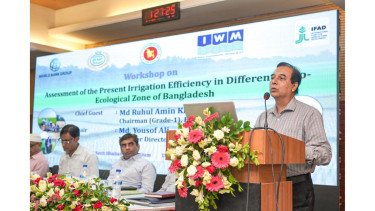More News
Trending
- Public blocks advisers’ motorcade in Bhola
- NCP leaders meet IMF mission team for policy discussion
- Hamza carrying the burden now, but for how long?
- Bangladesh eye strong showing in Davis Cup campaign
- TCB truck sales to resume Saturday after two months
- BNP’s Farooque urges people to vote ‘no’ in July Charter referendum
- Bashundhara Strikers cruise into final with six-wicket win
- Campaigning for Khaleda begins in Dinajpur-3
- Nepal ambassador explores ways for enhancing bilateral educational cooperation
- Bangladeshi cultural show ends with gesture of harmony
- July Charter Implementation Order contains ‘many ambiguities’: NCP
- 12 platoon BGB deployed in Dhaka, adjacent areas to maintain law and order
- Focus shifts to sporting wickets before Mirpur Test
- ‘Yes/No’ on 4 proposals: A case of Hobson’s choice
- Tensions rise amid illegal arms galore before polls
- Referendum only way to give July Charter legal validity: Parwar
- Nine killed, 29 injured in explosion at police station in India's Kashmir
- Teesta turns dry, locals face severe hardship
- ‘Medical malpractice’ continues as draft law stalls
- Economy in ‘waiting vortex’; experts urge credible elections
- ‘Extramarital affair’ led to trader Ashraful’s murder: DB, RAB
- Police uncover crude bomb factory inside Geneva Camp
- Man dies in motorcycle accident during Jamaat candidate’s election showdown in Rangpur
- Concerns grow over possible misrepresentation of public opinion
- Nation gripped by growing instability
- The New Generation of Risk: Global Realities and the Bangladesh Imperative
- Woman’s throat-slit body found in Gazipur; husband critically injured
- BRAC marks World Diabetes Day with nationwide health camps
- Dismembered body near Nat’l Eidgah: Two including prime accused arrested
- Case filed over death of Rajshahi judge’s son




